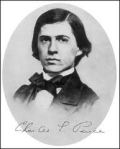MONTHLY MEMORY LANE: 3 years ago: January 2014. I mark in red three posts from each month that seem most apt for general background on key issues in this blog, excluding those reblogged recently[1], and in green up to 3 others I’d recommend[2]. Posts that are part of a “unit” or a group count as one. This month, I’m grouping the 3 posts from my seminar with A. Spanos, counting them as 1.
January 2014
- (1/2) Winner of the December 2013 Palindrome Book Contest (Rejected Post)
- (1/3) Error Statistics Philosophy: 2013
- (1/4) Your 2014 wishing well. …
- (1/7) “Philosophy of Statistical Inference and Modeling” New Course: Spring 2014: Mayo and Spanos: (Virginia Tech)
- (1/11) Two Severities? (PhilSci and PhilStat)
- (1/14) Statistical Science meets Philosophy of Science: blog beginnings
- (1/16) Objective/subjective, dirty hands and all that: Gelman/Wasserman blogolog (ii)
- (1/18) Sir Harold Jeffreys’ (tail area) one-liner: Sat night comedy [draft ii]
- (1/22) Phil6334: “Philosophy of Statistical Inference and Modeling” New Course: Spring 2014: Mayo and Spanos (Virginia Tech) UPDATE: JAN 21
- (1/24) Phil 6334: Slides from Day #1: Four Waves in Philosophy of Statistics
- (1/25) U-Phil (Phil 6334) How should “prior information” enter in statistical inference?
- (1/27) Winner of the January 2014 palindrome contest (rejected post)
- (1/29) BOSTON COLLOQUIUM FOR PHILOSOPHY OF SCIENCE: Revisiting the Foundations of Statistics
.
- (1/31) Phil 6334: Day #2 Slides
[1] Monthly memory lanes began at the blog’s 3-year anniversary in Sept, 2014.
[2] New Rule, July 30, 2016-very convenient.
























